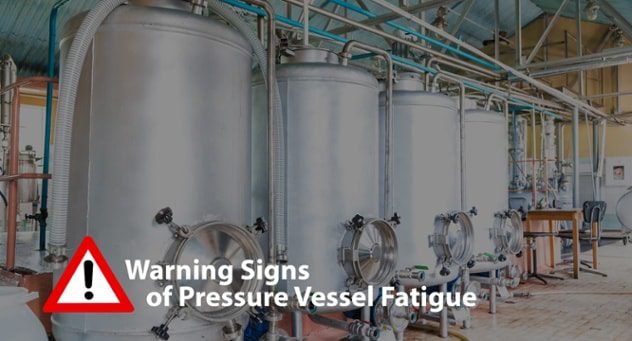Pressure vessels are designed to operate under diverse conditions and environments and therefore, undergo a rigorous inspection program both during manufacturing and during operations.
A key component of these inspections is to identify failure points and fatigue points that can have an adverse effect on the pressure vessel and its operations. When considering a new pressure vessel or tank for your business, regardless of size or operation, understanding how fatigue can occur and what to look for during operation, in addition to a certified inspection, can help prevent possible problems or catastrophic disruptions to your operations.
Consulting Your Manufacturing Records
Cursory inspections of your pressure vessel are not replacements for a certified inspection. However, cursory inspections can enable you to focus the certified inspections on areas of top concern. To make both inspections as comprehensive as possible, it is important to consult the manufacturing records and documents that accompanied your pressure vessel. Note any areas of concern that the manufacturer may have had and prepare to check those areas for signs of fatigue. During manufacturing, a pressure vessel fatigue analysis is performed to determine the fatigue life of the various components of your vessel. Knowing the results of this and the length of operation of the vessel can also point you to areas for primary inspection.
Physical Inspection
A physical top to bottom inspection of the pressure vessel should be conducted with an emphasis on all fatigue points. This includes any and all maintenance hatches, inlet or outlet ports, valves, valve stems, sensor ports or indicators or any location that at any point undergoes stress loading of any type.
There are some key signs to look for in these areas:
- Cracks that can be seen with a magnifying glass or larger.
- Loose bolts or nuts. (This is can be the result of dynamic loading and a failure in the binding threads and should be replaced.)
- Discoloration of the material
- Rust or oxidation
- Chemical corrosion or weakening of the material
- Valves that require significant effort to turn
- Stuck or frozen latches
- Bowing or out of alignment piping.
- Pitting in the material
All of these and more can be indicative of pressure vessel fatigue and immediate corrective measures should be implemented. If any of the above signs are discovered, the pressure vessel should be put in a no-load condition and a certified inspection conducted to ensure the safe operation of the vessel. Only inspections that correspond to ASME Section VIII rules and regulations should be considered and should only be conducted by a certified ASME inspector.
All pressure vessels that are under fatigue conditions represent a potential hazard and should be treated as such. Often times, safety is placed behind cost, however, the long-term cost savings from a properly run, inspected and maintained vessel far outweigh any short-term cost savings for your company. Businesses who do not properly maintain, inspect and properly operate their pressure vessels are subject to situations far worse than the temporary cost increase from a quality inspection and maintenance regimen.


 ASME Informational
ASME Informational Tank Materials
Tank Materials